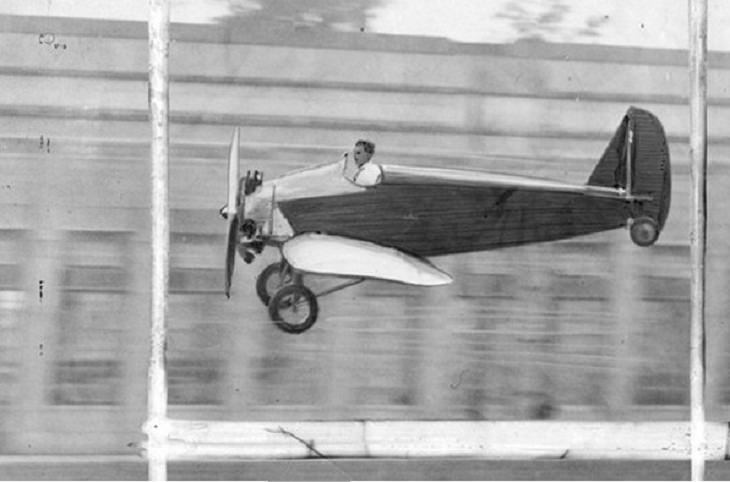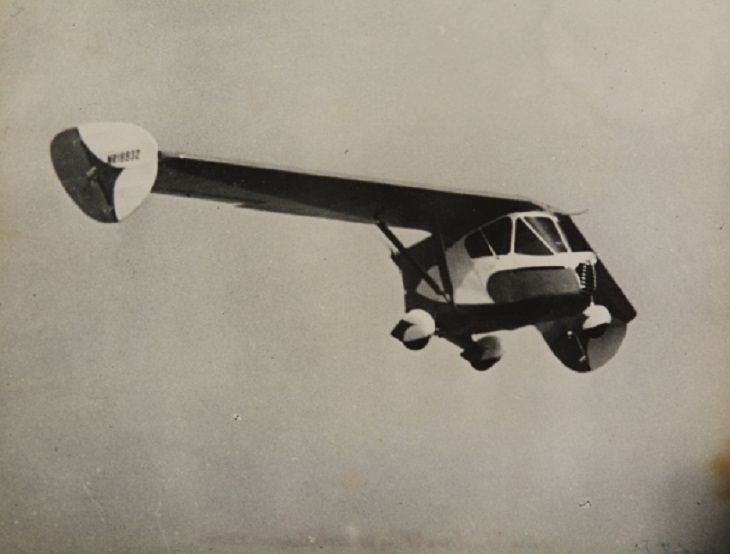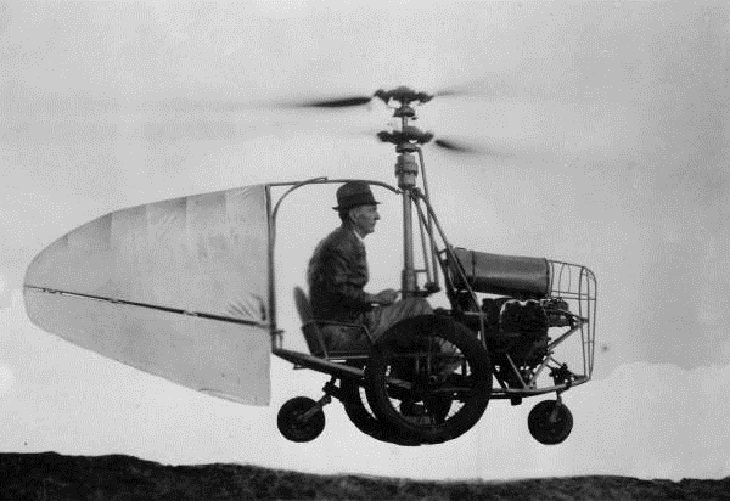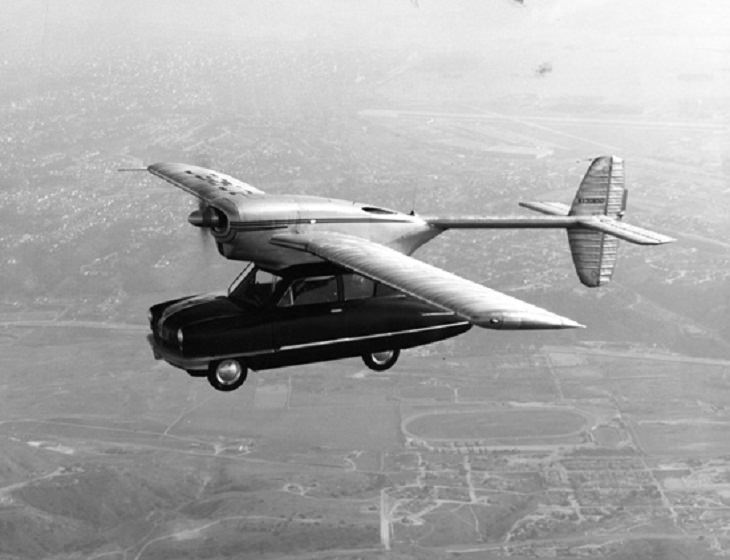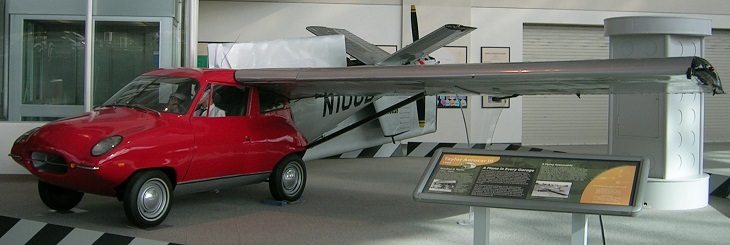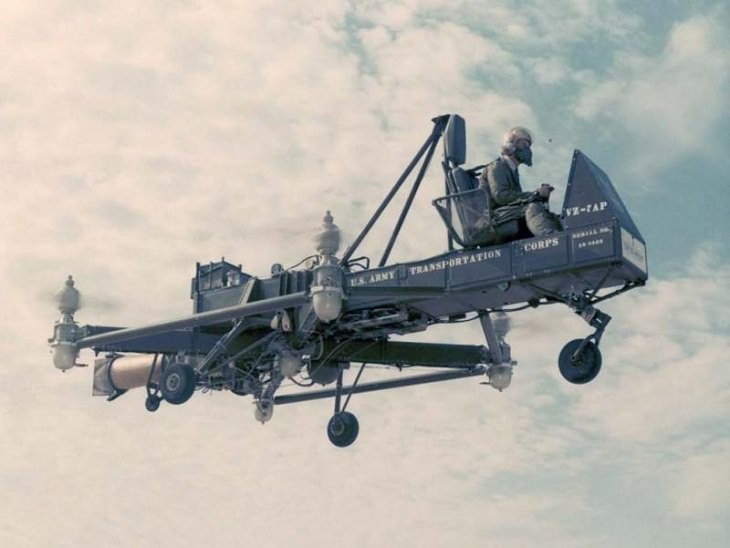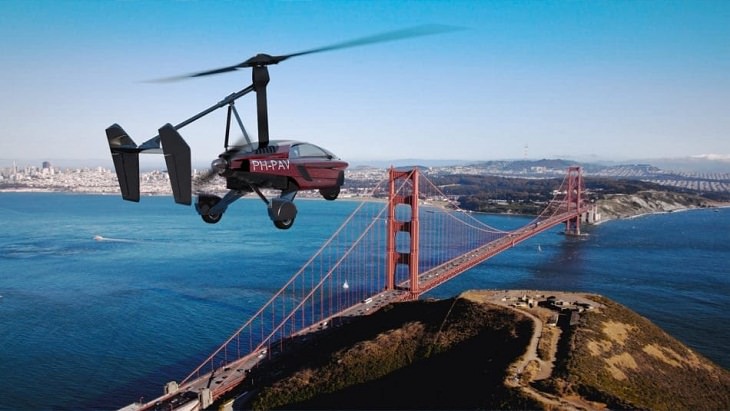1. The Ford “Flivver”
"Mark my words: a combination airplane and motorcar is coming. You may smile, but it will come." This is what American industrialist and business mogul Henry Ford had said in the 1940s. People indeed chuckled at what appeared to be a ridiculous idea then. But Ford was not one to stop dreaming.
In fact, he had already spearheaded one attempt of a flying car in 1926 when he introduced the “Ford “Flivver” to the world. It was a small single-seat plane, about 15 feet (4.5 m) long and with a wingspan of about 23 feet (7 m). It ran on a 3-cylinder, 35-horsepower engine and was supposed to be a flying car for the masses. Ford’s vision of affordable aviation and to put the common man in the air was dependent on this vehicle. Unfortunately, due to a fatal crash of the Flivver—on February 25, 1928—and the death of its only test pilot, 25-year-old Harry J. Brooks, the dream ended abruptly and the project was eventually discarded.
2. Waterman Aerobile
Waldo Waterman, an inventor and aviation pioneer, is considered to be the first American to make a true flying car; even though it wasn’t successful. Waterman spent several years developing a "roadable" airplane after being inspired by a casual discussion with aviation pioneer Glenn Curtiss. In 1934, he flew his first successful prototype - the "Arrowplane". It was a high-wing monoplane with tricycle wheels. The roadable aircraft was tailless, and had two seats, along with a single-engine pusher.
Also called the W-4, the Arrowplane’s wings had wooden spars and metal ribs as well as triangular endplate fins bearing upright rudders. For road use, the wings and the propeller could be quickly detached. Thus, on the ground, the engine drove the main wheels through a differential gear and the vehicle could move like a normal car. It was a weird contraption but the Arrowplane still goes down as the first real flying car when it first took flight on the 21st of February 1937. However, the market response wasn’t enthusiastic and the line was halted in 1938.
3. Dixon Flying Car
Jess Dixon, of Andalusia, Alabama, was fed up of being constantly stuck in traffic jams. Thus, in 1940, he designed and built a novel flying vehicle. This 'flying car’ was a blend of an automobile, helicopter, autogiro, and motorcycle. It had two blades, which spun in opposite directions – almost a foot above the operator’s head – and was powered by an air-cooled 40 h.p. motor. The car was made for a single passenger and could fly forward, backward, straight up, or hover in the air. It also had four wheels in a diamond pattern under the body. Reportedly, the vehicle could run on the road or fly across the air at speeds of up to 100 mph (161 km/hr).
Unfortunately, besides this sole photo and little mention of the vehicle in a newspaper clipping from Andalusia not much information is available about the Dixon Flying Car.
4. ConvAirCar
The Convair Model 116, also known as the 'Hall Flying Automobile' or the 'ConvAirCar', was the perfect example of how to easily create a hybrid plane and a car – by bolting a car onto a plane. As unusual as it looked, this flying car created a lot of curiosity back when it was launched and took flight for the first time in 1946. The wings, tail, and propeller could be easily detached from the car, which meant it could then be driven on the roads like a normal car. The ConvAirCar also had two fuel gauges—one for the car’s engine and one for the plane’s.
The 116 model of the automobile only had one prototype, but it flew 66 flights during its life. Later, Convair tried to improve the design and came out with the model 118, increasing the engine capacity from a 130-horsepower model to a 190-horsepower. The company had plans to build 160,000 of these flying cars. However, that plan never took off after one of the prototypes suffered a deadly crash and the project was then scrapped.
5. Taylor Aerocar
Designed and built by Moulton Taylor in 1949, the Aerocar was a "roadable" airplane authorized for use as both a plane and an automobile. The company that built this flying car was Aerocar International and it went on to become the first roadable plane to be certificated by the Civil Aeronautics Administration.
The Aerocar I had a small two-passenger cabin along with wheels lodged in an external airplane-like spat. The Aerocar had a top road speed of 67 mph (107.8 km/hr h) and a cruising speed of 55-60 mph (88.5-96.5 km/hr). It could also achieve a top speed of 110 mph (177 km/hr) and a cruising speed of 100 mph (161 km/hr) in the air. One of the standout features of this flying car was that its wings and tail could be hauled behind the car like a trailer. The Aerocar looked quite sporty and could transform from automobile to aircraft in just about 15 minutes. Reportedly, it was also quite steady and pleasant to fly in.
While the company went on to develop a few more models of the Aerocar, the vehicles did have their issues. They were considered noisy by car standards and heavy by plane standards. Also, there were reports that these roadable planes were slow both on and off the ground. The production hence failed to take off but Moulton Taylor still believed that one day the flying car would eventually become part of everyday life.
6. Curtiss-Wright VZ-7
The Curtiss-Wright VZ-7 was the first vehicle that gave the military a taste of flying cars. Designed by the Curtiss-Wright company for the U.S. Army in 1958, the VZ-7 was meant to be a type of "flying jeep" which enabled the pilot to maneuver through harsh terrain on the ground while also being able to fly.
The VZ-7 was a VTOL aircraft - Vertical Take-Off and Landing – and flew with the help of four upright propellors, placed behind the “cockpit” area. It also had a fuselage with the pilot's seat along with fuel tanks and flight controls. Reportedly, the flying platform was comfortable to operate and easy to fly and the speed of individual propellors could be changed by the pilot.
The aircraft performed quite well in tests but, unfortunately, it couldn’t meet the standards of the Army. The Curtiss-Wright VZ-7 was hence retired and returned to the manufacturer in 1960.
7. Terrafugia Transition
The Terrafugia Transition was the first aircraft that gave people a glimpse of what a commercial flying car could look like. The vehicle had its first successful flight in 2009 and since then has made multiple upgrades and transitions to the designs. A second successful test flight took place in 2012 and the current model of the aircraft can achieve a top speed of 100 mph (161 km/hr) with a maximum range of 400 miles (644 km) with the help of a gasoline-electric hybrid powertrain. The Terrafugia can reach heights of 9,000 feet (2743 m) and allows two passengers to comfortably soar above traffic.
Furthermore, there’s also a neat "boost” option for the throttle that gives the rider a quick burst of extra power. A parachute system, upgraded seat belts and airbags, and three rearview cameras in road-going mode are some of the other highlights of this sleek-looking flying car. Another point worth noting is that the Terrafugia can transition from car to plane in less than a minute.
After going through multiple transformations and a phase where it was believed the project would never take off, the aircraft finally hit the market in 2019.
8. PAL-V Liberty
The dream of making flying cars a regular part of the society has taken another big leap with the development of the PAL-V Liberty, made by a Dutch company. Interestingly, the PAL-V (a personal air and land concept vehicle) has been attempting to develop the modern flying car for the last 15 years and has come up with a few models in the past few years. The PAL-V Liberty and the Pal-V Liberty Pioneer are its latest models.
Part-gyrocopter, part-car and part-motorbike, the Pal-V Liberty is a two-seat three-wheeler that can reach a top speed of 160 km/h (100 mph) on the road and can be driven by anyone with a driver's license. You will, however, need a pilot’s license to fly the PAL-V Liberty. The vehicle has been authorized to fly under both the European Aviation Safety Agency and the US Federal Aviation Administration, and complies with road safety regulations, too.
The PAL-V Liberty has a tilting suspension and a maximum take-off weight of about one ton (907 kg). It also has two separate engines - one for flight and one for the street. Furthermore, it takes between five and 10 minutes to convert the car from flying to driving mode.
The design of the Liberty is actually quite similar to what people envisioned flying cars to be like decades ago and it is bound to create a lot of attention in the coming years. Now, it remains to be seen if the PAL-V Liberty and its other editions manage to survive and leave a lasting impression in the fascinating history of flying cars.
Share this post with someone who loves cars!

